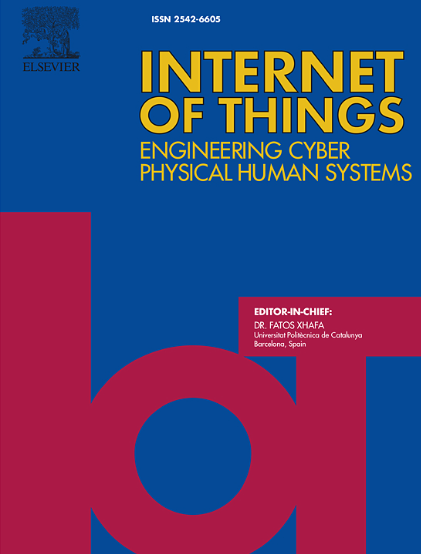使用区块链的物联网设备的物理不可克隆功能和基于 QKD 的身份验证方案
IF 6
3区 计算机科学
Q1 COMPUTER SCIENCE, INFORMATION SYSTEMS
引用次数: 0
摘要
随着物联网(IoT)设备的数量呈指数级增长,需要强有力的安全措施来防范不同类型的网络攻击。本研究通过整合区块链技术、量子密钥分发(QKD)和物理不可克隆函数(PUFs)三项前沿技术,提供了一种新型物联网设备认证技术,以减轻这些挑战。通过利用用于设备识别的 PUFs 的独特品质和用于密钥交换的 QKD 的无与伦比的安全性,所提出的方法旨在解决物联网环境中存在的重大安全问题。采用区块链技术可通过增加一个不可更改的分散信任层,确保分布式物联网网络中认证过程的透明度和可验证性。对计算和通信成本的研究表明,所提出的协议是有效的,只需较少的计算资源,这对于资源有限的物联网设备来说至关重要。基于真实或随机(ROR)模型的正式证明和使用 Scyther 工具进行的安全评估证明了该协议可抵御各种攻击,确保了通信的完整性和保密性。对各种威胁进行了分析,并证明该协议在各种形式的攻击面前都是安全高效的。本文章由计算机程序翻译,如有差异,请以英文原文为准。
Physical unclonable functions and QKD-based authentication scheme for IoT devices using blockchain
As the number of Internet of Things (IoT) devices is increasing exponentially, strong security measures are needed to guard against different types of cyberattacks. This research offers a novel IoT device authentication technique to mitigate these challenges by integrating three cutting-edge technologies namely blockchain technology, Quantum Key Distribution (QKD), and Physically Unclonable Functions (PUFs). By utilizing the distinctive qualities of PUFs for device identification and the unrivaled security of QKD for key exchange, the proposed approach seeks to address the significant security issues present in IoT environments. Adopting blockchain technology ensures transparency and verifiability of the authentication process across distributed IoT networks by adding an unchangeable, decentralized layer of trust. An examination of the computing and communication costs reveals that the proposed protocol is effective, necessitating low computational resources that are critical for IoT devices with limited resources. The protocol’s resistance against a variety of attacks is demonstrated by formal proofs based on the Real-Or-Random (ROR) model and security evaluations using the Scyther tool, ensuring the integrity and secrecy of communications. Various threats are analyzed, and the protocol is proven to be secure and efficient from all forms of attacks.
求助全文
通过发布文献求助,成功后即可免费获取论文全文。
去求助
来源期刊

Internet of Things
Multiple-
CiteScore
3.60
自引率
5.10%
发文量
115
审稿时长
37 days
期刊介绍:
Internet of Things; Engineering Cyber Physical Human Systems is a comprehensive journal encouraging cross collaboration between researchers, engineers and practitioners in the field of IoT & Cyber Physical Human Systems. The journal offers a unique platform to exchange scientific information on the entire breadth of technology, science, and societal applications of the IoT.
The journal will place a high priority on timely publication, and provide a home for high quality.
Furthermore, IOT is interested in publishing topical Special Issues on any aspect of IOT.
 求助内容:
求助内容: 应助结果提醒方式:
应助结果提醒方式:


